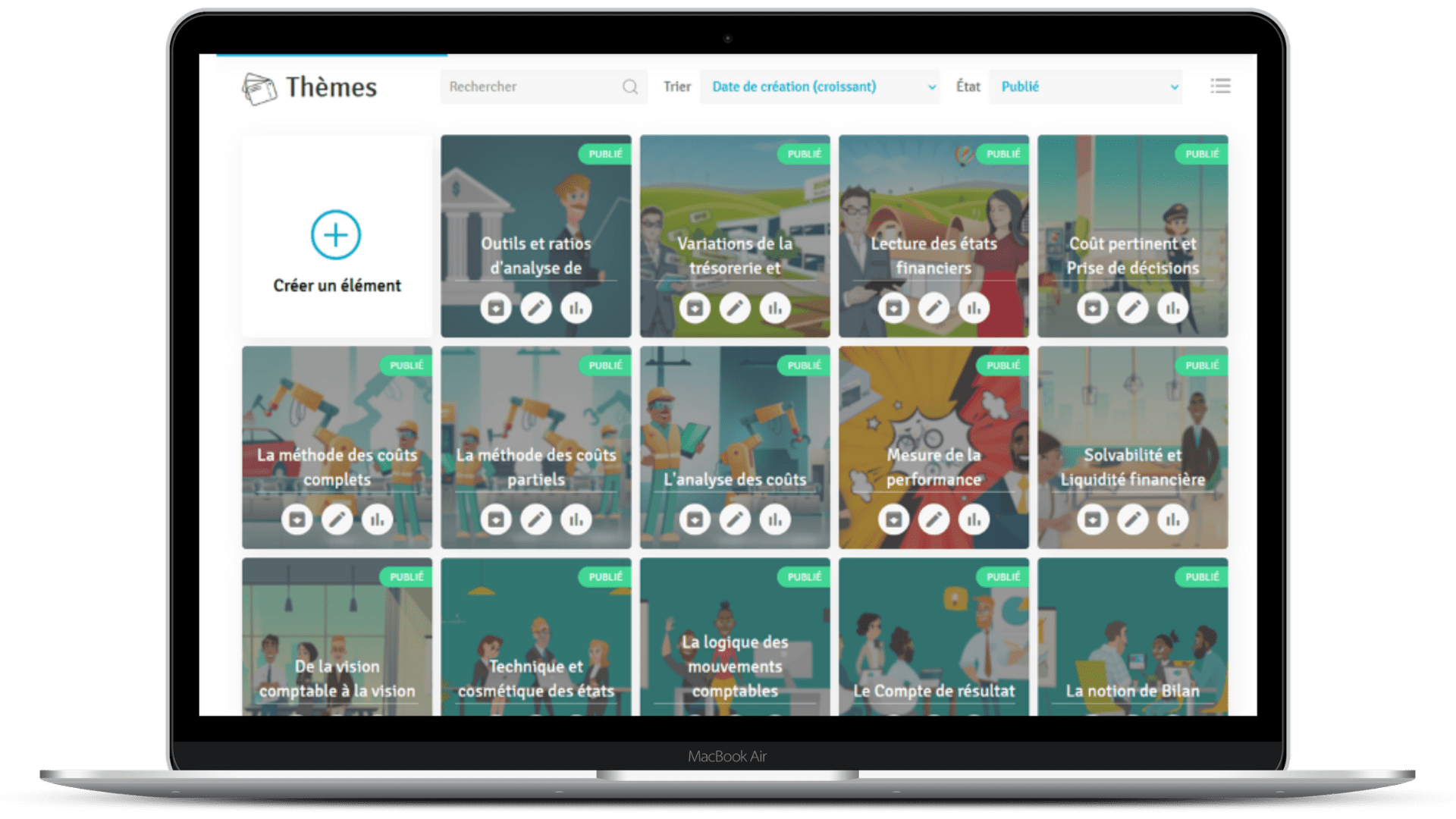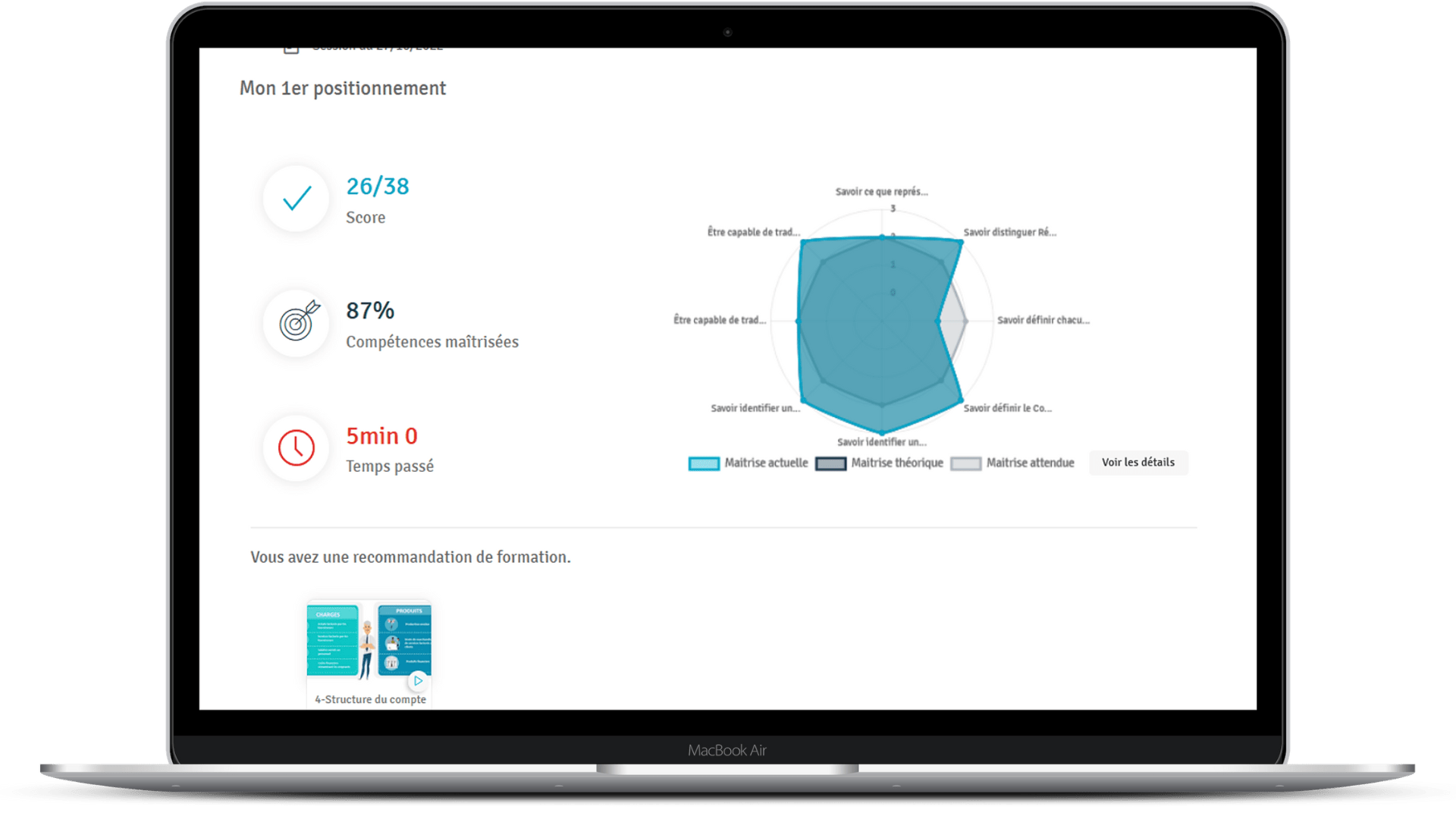The stakes for Action on Line
For over 20 years, Action on Line has been continuously on the lookout for new trends and techniques to improve its L&D methods. From ‘Serious Games’ to mobile-learning and adaptive learning, Action on Line stays up to date with innovations in financial training to always optimise its learning paths.
With over 200 eLearning modules and a big heterogeneity of learner profiles, it’s essential for Action on Line to personalise the eLearning training paths to better fit each learner’s needs and help them acquire new skills.
A few numbers about Action on Line:
- + 20 years of experience
- + 200 eLearning modules
- + 200,000 registered learners
- Customers like Banque de France, In Extenso, Centrale Lyon and EM Lyon
The project
To meet the challenge of coupling adaptive learning with their eLearning/eFinance catalogue, Action on Line has chosen the Domoscio Hub solution. The goal is to offer learners a training experience tailored to their existing knowledge and skills.
With this solution, learners’ knowledge and skills can be assessed through a positioning questionnaire, built by Action on Line field experts based on a skills directory.
Learning paths customised with recommended modules are then offered to learners, taking into consideration the expected learning objectives; and time spent learning is therefore optimised for each learner.
The deployment of Domoscio Hub

Adapt your learners’ learning path based on their skills and knowledge in finance! How Action on Line built this process
At first, they used brainstorms with business experts (chartered accountants, auditors, finance teachers) to create a skills directory for each of our themes.
Thanks to educational tools, we’ve created and linked each skill to assessment questions and eLearning content. The goal is to provide learners with what they need based on their skills and knowledge cartography.
The structure is then encapsulated in a SCORM experience that can be deployed on all LMS’ (like ours but also those of our customers).

Action on Line offers personalised training adapted to the learner’s actual skills level
When a learner first opens their adaptive eLearning program via the company’s LMS, they have to take an adaptive assessment test, which will assess their existing skills level.
Each question comes with a detailed correction for the learner.
If the learner’s proficiency level is below optimal level for one or more skills, multiple eLearning courses are suggested to them.
Once all recommended learning modules have been followed, the learner takes a second assessment test to evaluate the development of skills.
Everything is aimed at providing the learner with a customised skills acquisition path so skills are developed!

|
Adaptive learning to help monitor learning The algorithm uses the assessment tests to position the learner, assess the skills acquisition and, if necessary, suggest new learning modules to the learner. Learners can therefore deepen their knowledge in finance with other eLearning courses.
|
Benefits
Domoscio Hub offers the possibility to encourage the learners to learn what they need; to provide them with engaging learning experiences. By being compatible with the existing LMS, Domoscio Hub can use all existing resources from the Action on Line learning catalogue.
The feedback from testing learners are very encouraging:
- 92% found the experience adapted to their profile and their skills needs
- 76% considered that they had acquired new skills at the end of the learning path
Latest news
Our latest articles about the topics: learning, science and Domoscio's news.